Following up the recent article on the 2008 Xiaguan "Dayi", here's one of the Feitai (FT) offerings for this year, under the "Nanzhao" [southern edict] brand. The last time that I drank this tea, flowers were blooming, which have since long gone.
The "Nanzhao" brand was first produced in 2003, and this cake is a blend of material from 2006 and 2007. Despite the irritating bubble typeface used for the wrappers, they do a good job of conveying the "southern minorities" feel...
...including some interesting text on the back of the wrapper which looks like Tibetan. I defer to Tibetan experts (cough Nada cough) on this one. It's nice to see recognition of the fact that there used to be a non-Han culture in Tibet, some time ago. Well played, Xiaguan.
The bing is tight, pressed using hydraulics. The thickness is approximately 1cm at its thickest point, giving you an idea of the compression. Tell-tale razor sharp edges further testify to the "tiebing" [iron cake] status of this tea. Not shown here, the dimple in the rear face of the cake contains the Nanzhao logo.
Unusually, the makers have seen fit to scatter a number of white tips into the mold before adding the maocha - they look a little stranded and superficial, and exist nowhere else in the cake.
Opening the cake reveals an instantly obvious aroma of purple-leaf fruitiness, with a touch of smokiness underneath. This sets the scene for the remainder of the session.
Xiaguan tightness means careful work with the pu'er knife. Gradual lifting and prying eventually releases enough for a brew. I am deliberately conservative, remembering previous sessions of overwhelming bitterness. Slowly, eventually, I am beginning to learn that fragmented, tightly-compressed Xiaguan teas really do require restraint.
My last encounters with this tea were positive enough that I acquired a pair of bing; today, I revisit those unpublished summer notes with the critical, pu'er-thirsty palate that drinking tea at 5 a.m. provides. I found myself awake and inexplicably thinking of Nanzhao, so decided to get started early this morning...
The original samples (pictured below) were kindly provided by Scott of Yunnan Sourcing, who seems to be able to pre-empt my selections rather well these days. This is at once reassuring and terrifying.
The brew is very honest in colour, being a solid, heavy yellow. I previously noted the aroma as being smoky and corn-like, but today it seems entirely "purple-leaf fruitiness", ending in dark sugar, following the aroma of the dry leaves. (The aroma of the dry leaves seems to be telling me quite a lot about a cake, of late. I'm not sure why this might be.)
The flavour itself carries on these twin themes of purple-leaf fruits and finishing sweetness throughout the session. The body is thick and wholesome, while the chaqi is brightening, which pushes me into the morning with a shove.
Like most fragmented-leaf Xiaguan, this tea can be excessively bitter and steps must be taken to avoid it. Between the 2nd and 5th infusions, particularly, the bitterness can really knock you for six. I look forward to seeing how these cakes turn out in a few years, once that edge has worn off, because what remains underneath is solid - there is definite content to this tea, which is what I'm after.
Though unenthralled by this revisitation, primarily due to the bitterness of the tea, I did find it to be welcoming by the 5th infusion, when the characteristics of the actual leaf began to show through as the bitterness receded. Certainly, I won't be buying more of these cakes, but time could turn them into something interesting, as the potential is there. Caveat emptor.

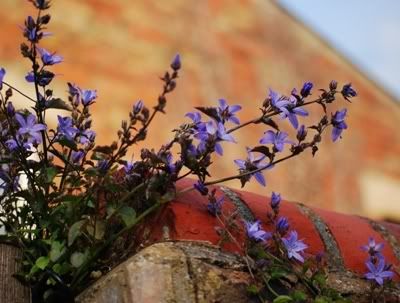
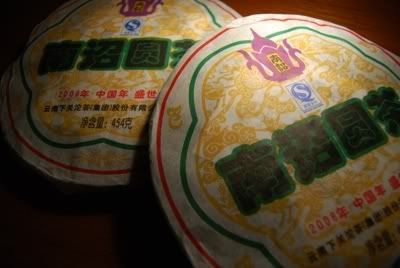
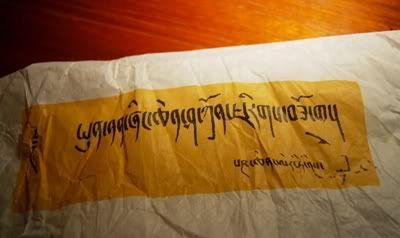

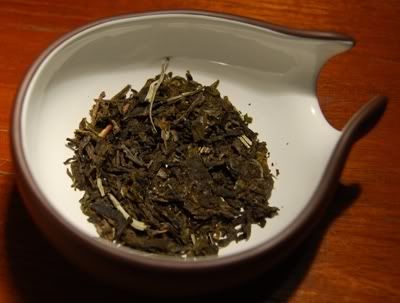
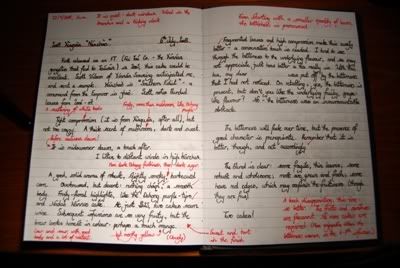
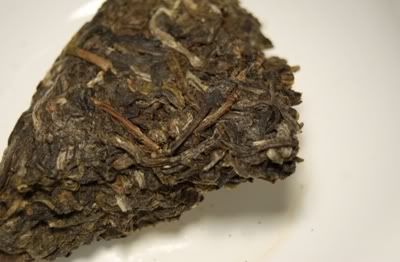


I tasted the sample of this tea you donated to me and had a similar impression.
ReplyDeleteI really really liked the flavour, to me it was some kind of flowery. But the devastating bitterness ruined it all. Especially the second and the third infusion were near the borderline of undrinkability. This may be due the crumbliness of the leaves I used. On from the forth infusion it got better.
Best wishes,
Bert
I'd like to thank you for your most fascinating blog. I post this here, as I cannot find a link to send you a note elsewhere.
ReplyDeleteGiven your interest in tea, I thought perhaps you might also enjoy a book I recently stumbled accross concerning its history:
"The Ancient Tea Horse Road: Travles with the Last of the Himalayan Muleteers" by Jeff Fuchs.
To quote Amazon: "The Ancient Tea Horse Road winds its way through some of the most unforgiving terrain on earth. Over seven gruelling months, Canadian Jeff Fuchs took on the challenge of following traditional muleteers along this twelve-hundred-year-old route. Documenting his travels in rich and eloquent detail, with stunning photography, Fuchs brings to life a path that has been an escape route, trade highway, and an adventure destination, battling frostbite, snow blindness, and hunger along the way".
I hope you take the opportunity to sample this volume. I am currently reading it and every page fills me with amazement.
Regards,
Silevria
Dear Bert,
ReplyDeleteThis tea can be really cruel when it wants - best to be cautious in all regards. I'd love to fast-forward to see what it will be like when the bitterness recedes...
Dear Silevria,
Thanks for the recommendation! I must confess that absolutely every single tea book I have encountered (which is quite a few) have turned out to be... not just slightly bad, but genuinely appalling. I'm now in the habit of borrowing them from the university library first, to avoid wasting further money! I've not heard of the book you recommend, and I am hoping that it will be the first to pleasantly surprise me! Thanks again. :)
Toodlepip both,
Hobbes
(Contemporary tea-books, that should be! Okakura's "The Book of Tea" is occassionally enjoyable, though I find his style IMMENSELY frustrating.)
ReplyDeleteThe buds on top of the cake remind me of parsley on the side of my dinner plate - an annoying decoration that doesn't contribute anything to the meal.
ReplyDeleteI haven't tried this particular cake, but others of the FT series I also found brutally bitter. Out of many tries, I had one that by luck showed some real character, but I was unable to reproduce it. With their compression, it may be some time before it tones down.
Excellent entry, as usual
Nice looking rosemary babies in the background. Do you garden?
ReplyDeleteLiving in the mild climate of San Francisco, I have little use for XG products. I find them unbearable when young and the uber-compression would require epic aging times in my locale.
-David
Dear Scotto,
ReplyDeleteGood to see you over here - no Alec Guiness avatar? :)
Dear David,
I know what you mean. Have you looked into the recent Xiaguan bingcha? Some of them are compressed normally - you might be pleasantly surprised by an FT bing, for example.
Good eye on the rosemary! The only thing I can successfully grow is bacteria, I think, so I leave the "green finger" work to my wife. :)
Toodlepip both,
Hobbes
Just yet I gave this tea another chance.
ReplyDeleteLike for the first time I used flash rinses but the leaves I used were not that crumbly and I used a gaiwan for brewing which allows an almost instant pour.
What can I say - there is almost no bitterness! I'm really surprised. This tea is now highly enjoyable with a sweet huigan. Maybe I should do more brewing with a gaiwan. The longer pouring time from the yixings is making a huge difference for green sheng puer.
Dear Bert,
ReplyDeleteI'm glad it worked out! I prefer a teapot with a wide spout and quick pour for your shengpu - thin spouts, waiting for a long time to get the infusion out, never makes for a good session. Good stuff!
Toodlepip,
Hobbes
Dear Hobbes,
ReplyDeleteyou maybe might want to try it in a gaiwan too if you should have one to your hand - you also seem to have encountered quite a bit of bitterness.
The teapot i used (shi piao hu) does not have that shallow spout and pours quicker than my other pots but it didnt't work with this tea.
Maybe the thinner walls of the gaiwan retained less heat what did its share in preventing the bitterness to release.
I also took Stéphanes advice and did not pour directly on the leaves. Instead I poured on the walls of the gaiwan; with a pot I do not have this possibility.
However, I'm glad I did not made a final judgement of this tea before tasting it twice.
Have a nice evening!